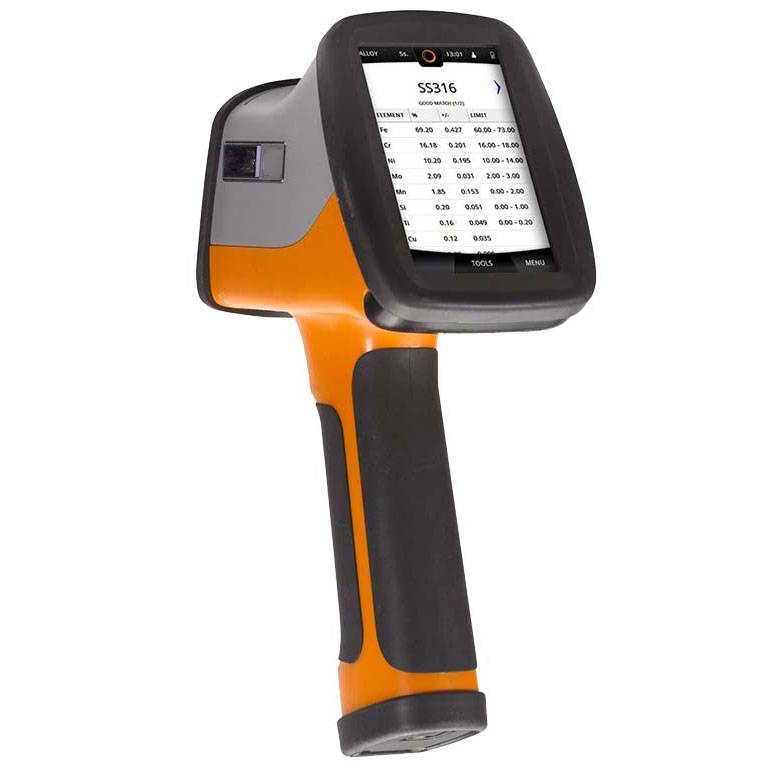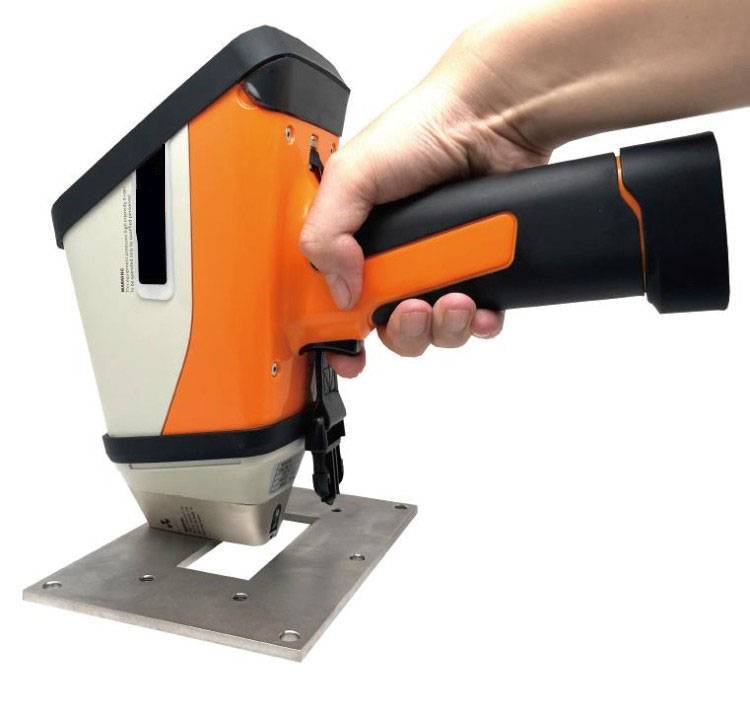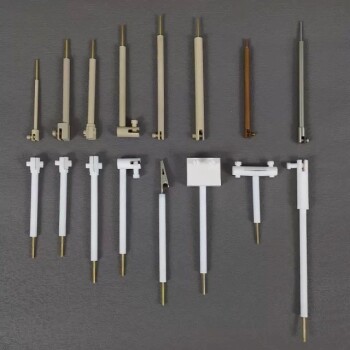Table of Contents
- Introduction to Handheld Coating Thickness Gauges
- Types of Handheld Gauges for Different Coatings
- Key Features and Technologies in Handheld Gauges
- Choosing the Right Handheld Gauge for Your Needs
- Best Practices for Using Handheld Coating Thickness Gauges
- Applications of Handheld Alloy Analyzers in Various Industries
- Future Trends in Handheld Coating Thickness Measurement
- Conclusion and Recommendations
Introduction to Handheld Coating Thickness Gauges
Accurate measurement of coating thickness is critical in industries such as electroplating, automotive, and industrial coatings, as it ensures product quality and prevents defects. Handheld coating thickness gauges play a vital role in achieving this accuracy. This article explores the best practices and technologies for measuring coating thickness using handheld gauges, ideal for various applications like electroplating, metallic coatings, and paint and powder coatings. It delves into the different types of handheld gauges available and their specific applications, the key features and technologies that enhance accuracy and usability, and the factors to consider when choosing the right gauge. The article also provides best practices for using handheld coating thickness gauges and discusses their applications in industries such as automotive, aerospace, and manufacturing. It concludes with future trends in handheld coating thickness measurement and recommendations for businesses and professionals looking to invest in these gauges, emphasizing the importance of continuous innovation and training in maintaining high standards in coating thickness measurement.
Types of Handheld Gauges for Different Coatings
Handheld coating thickness gauges are essential tools in various industries, including electroplating, metallic coatings, and paint and powder coatings. These gauges ensure that the coatings applied to substrates meet the required standards for quality and performance. Here, we explore the different types of handheld gauges and their specific applications.
Electroplating and Metallic Coatings
In the electroplating industry, the thickness of coatings is critical for ensuring the durability and functionality of the finished products. Handheld gauges that utilize magnetic measurement principles are commonly used for these applications. The magnetic attraction principle thickness gauge measures the thickness of the coating by assessing the suction force between a permanent magnet probe and a magnetic steel. The distance between these two components directly correlates to the coating thickness. This method is particularly effective for coatings on magnetic substrates like steel and iron.
Another type of gauge used for metallic coatings is the magnetic induction principle thickness gauge. This device measures the magnetic flux of the probe as it flows into the iron substrate through the non-ferromagnetic coating. The thickness of the coating is inversely proportional to the magnetic flux; a thicker coating results in a smaller magnetic flux. This gauge is ideal for precise measurements of thin metallic coatings.

Paint and Powder Coatings
For industrial and automotive paint and powder coatings, the accuracy of thickness measurement is crucial for maintaining the aesthetic and protective qualities of the coatings. Handheld gauges that employ eddy current measurement principles are often used in these scenarios. These gauges measure the thickness of non-conductive layers on conductive metals. Although their accuracy is slightly lower than magnetic thickness measurement methods, they are suitable for a wide range of non-magnetic coatings, including paints and powder coatings.
Additionally, ultrasonic measurement methods are utilized for their ability to measure the thickness of various coatings on different substrates. Ultrasonic gauges can precisely measure the thickness of coatings on metal, plastic, and composite surfaces. They are particularly useful for monitoring the thinning of coatings on pressure vessels and pipelines, which is essential for safety and performance in industrial settings.
Choosing the Right Gauge
Selecting the appropriate handheld coating thickness gauge depends on the type of coating, the substrate material, and the specific requirements of the application. For electroplating and metallic coatings, magnetic gauges are typically preferred due to their high accuracy and suitability for magnetic substrates. In contrast, eddy current gauges are more appropriate for non-magnetic coatings such as paints and powder coatings. Ultrasonic gauges offer versatility and can be used across various materials and coating types.
In conclusion, the choice of handheld coating thickness gauge is dictated by the specific needs of the coating application. Whether for electroplating, metallic coatings, or paint and powder coatings, these gauges provide essential data to ensure the quality and performance of coatings, thereby safeguarding the integrity of the final products.
Key Features and Technologies in Handheld Gauges
Handheld coating thickness gauges have revolutionized the field of material analysis, offering a blend of portability, precision, and ease of use. These devices are equipped with advanced features and technologies that enhance their functionality and accuracy.
Digital Displays
One of the key features of modern handheld gauges is the use of digital displays. These displays provide clear, real-time feedback on the thickness measurements, making it easier for users to interpret data quickly and accurately. The digital interface also allows for more complex data processing and can display multiple readings simultaneously, enhancing the usability of the device.

Non-Destructive Testing Capabilities
Handheld gauges employ non-destructive testing (NDT) methods, which are crucial for preserving the integrity of the materials being tested. This capability is particularly important in industries where samples are expensive or cannot be easily replaced. By using NDT, these gauges can measure the thickness of coatings without damaging the underlying material, ensuring that the sample remains intact for further use or analysis.
XRF Technology
X-ray fluorescence (XRF) technology is a significant advancement in handheld gauges. This technology allows for the analysis of coating thickness in accordance with international standards such as ASTM B568, ISO 3497, and DIN 50987. XRF works by measuring the fluorescent (or secondary) X-ray emitted from a sample when it is excited by a primary X-ray source. This method is highly accurate and can be used to measure a wide range of coating materials and thicknesses.
Capillary Optics vs. Collimators
The choice between capillary optics and collimators in handheld XRF analyzers depends on the specific requirements of the measurement. Capillary optics are ideal for analyzing very small parts or coatings at the nanometer scale, providing a high level of precision. On the other hand, collimators are suitable for larger parts and offer a balance between precision and speed, making them a versatile choice for many applications.
Electromagnetic Induction Gauges
Another technology used in handheld gauges is electromagnetic induction, which is particularly effective for measuring the thickness of non-magnetic coatings on magnetic metal substrates and non-conductive coatings on conductive metal substrates. These gauges are designed to measure large parts and can complement XRF analyzers, providing a comprehensive solution for coating thickness analysis.
Benefits of Handheld Gauges
The combination of these technologies and features in handheld gauges offers several benefits. They provide fast, efficient, and non-destructive measurements, which are essential for quality control on production lines and in field applications. The portability of these devices also makes them ideal for testing large samples or conducting measurements in remote locations.
In conclusion, the key features and technologies in handheld coating thickness gauges, such as digital displays, non-destructive testing capabilities, and XRF technology, significantly enhance their accuracy and usability. These advancements make handheld gauges indispensable tools for ensuring the quality and performance of coatings in various industries.
Choosing the Right Handheld Gauge for Your Needs
Selecting the appropriate handheld coating thickness gauge is crucial for ensuring accurate and reliable measurements in various industries. The choice of gauge depends on several factors, including the type of coating, the substrate material, and specific industry requirements. Here, we delve into the key considerations to help you make an informed decision.
Understanding Coating Types and Substrate Materials
Coating thickness gauges are designed to measure the thickness of non-magnetic coatings on magnetic materials and non-conductive coatings on non-magnetic metal substrates. Common coatings include paint, plastic, ceramic, rubber, and various metal layers like zinc, aluminum, and chromium. The substrate materials can range from steel and iron to alloys and non-magnetic metals like copper, aluminum, and zinc.

Measurement Range and Resolution
The measurement range of a coating thickness gauge is a critical specification. It determines the minimum and maximum thickness that the gauge can accurately measure. For instance, gauges designed for thin coatings (0.2 to 0.5μm) are suitable for decorative applications, while those capable of measuring thicker coatings (>1μm) are ideal for products exposed to harsher wear conditions.
Resolution refers to the smallest change in thickness that the gauge can detect. High-resolution gauges are essential for applications requiring precise thickness control, such as electroplating and galvanizing operations.
Ease of Use and Calibration
Ease of use is another important factor. Handheld gauges should be user-friendly, with straightforward operation and clear display readings. Calibration is also a key aspect of using these gauges. Proper calibration ensures accurate measurements and should be performed according to the manufacturer's guidelines, considering factors like surface curvature, substrate thickness, and external magnetic fields.
Specific Industry Requirements
Different industries have specific requirements for coating thickness. For example, in the automotive industry, paint and powder coatings not only provide aesthetic appeal but also offer surface protection against wear and rust. In such cases, gauges that can measure anodized thickness of aluminum and protective coatings like polymers and epoxies are beneficial.
Additional Features
Advanced handheld gauges may offer additional features such as data logging, Bluetooth connectivity, and compatibility with software for data analysis. These features can enhance the functionality of the gauge, making it more suitable for quality control and reporting in industrial settings.
Conclusion
Choosing the right handheld coating thickness gauge involves careful consideration of the coating and substrate types, measurement range and resolution, ease of use, calibration requirements, and specific industry needs. By understanding these factors, you can select a gauge that meets your requirements and ensures the quality and durability of your coatings.
Best Practices for Using Handheld Coating Thickness Gauges
Handheld coating thickness gauges are essential tools for measuring the thickness of coatings on various substrates without causing damage to the material. These devices are widely used in industries such as automotive, aerospace, and manufacturing to ensure the quality and durability of coatings. To maximize the accuracy and efficiency of these gauges, it is crucial to follow best practices in calibration, measurement techniques, and maintenance.
Calibration
Proper calibration is the foundation of accurate measurements. Before each use, ensure that the gauge is calibrated using appropriate standards that match the type of coating and substrate you are measuring. This process involves setting the gauge to recognize a known thickness, which serves as a reference point for all subsequent measurements. Always use calibration standards that are traceable to international standards to ensure reliability.

Measurement Techniques
When taking measurements, it is important to follow specific techniques to avoid errors:
-
Selection of Measuring Points: Choose areas that are representative of the coating and free from defects. Avoid edges, corners, and areas with visible irregularities.
-
Probe Pressure and Orientation: Apply consistent, light pressure to ensure good contact between the probe and the surface. The probe should be perpendicular to the surface to avoid skewed readings.
-
Environmental Factors: Temperature and humidity can affect the readings. Ensure the environment is stable and within the gauge’s operating conditions.
-
Multiple Readings: Take multiple measurements in different areas and calculate the average to get a more accurate representation of the coating thickness.
Maintenance
Regular maintenance ensures the longevity and accuracy of the gauge:
-
Cleaning: After each use, clean the probe and the gauge body with a soft, dry cloth to remove any debris or contaminants that could affect future readings.
-
Battery Management: Keep the battery charged and replace it when necessary to avoid power-related issues that could interrupt measurements or damage the gauge.
-
Storage: Store the gauge in a cool, dry place to prevent damage from moisture or extreme temperatures.
Common Errors and How to Avoid Them
-
Inaccurate Calibration: Always use the correct calibration standards and perform calibration in conditions similar to those of the actual measurement environment.
-
Improper Handling: Avoid dropping or subjecting the gauge to shocks, which can affect its internal components and calibration.
-
Ignoring Environmental Factors: Be aware of how changes in temperature, humidity, and the presence of magnetic fields can affect readings.
By adhering to these best practices, users can ensure that their handheld coating thickness gauges provide reliable and accurate measurements, contributing to the overall quality and efficiency of their coating processes.
Applications of Handheld Alloy Analyzers in Various Industries
Handheld alloy analyzers have become indispensable tools in various industries due to their ability to quickly and accurately verify the composition of metal alloys. These devices are crucial for ensuring product reliability and safety, especially in sectors where precision and quality are paramount.
Aerospace Industry
In the aerospace sector, handheld XRF (X-ray fluorescence) and LIBS (Laser-Induced Breakdown Spectroscopy) analyzers are extensively used. These devices are capable of verifying high-temperature nickel alloys, titanium alloys, and aluminum alloys, which are essential for aerospace components that must withstand extreme conditions. They can also analyze lightweight elements in these alloys and detect high-purity tin to prevent issues like tin whisker formation. Additionally, these analyzers can measure the thickness of protective coatings like cadmium and zinc-nickel, ensuring that they meet the required specifications for aerospace applications.
Automotive Industry
The automotive industry relies heavily on handheld alloy analyzers for RoHS compliance, glass composition analysis, and coating analysis. Handheld XRF spectrometers are used to screen solder and paint on car bodies, detecting restricted metals such as lead, mercury, chromium, cadmium, and bromine. For glass composition, portable XRF can quickly analyze major and trace components, ensuring the safety and design integrity of automotive glass. Coating analysis is also critical in the automotive sector, where coatings are used to enhance performance and aesthetics. Handheld XRF can analyze the mass density of special surface treatment coatings, ensuring they meet performance standards while controlling costs.

Metal Finishing and Coating Industries
In metal finishing processes, handheld coating thickness gauges are essential for ensuring the precise control of electroplated or galvanized coatings on magnetic substrates. These gauges provide reliable and accurate measurements, crucial for preventing defects in finished products. Similarly, in industries dealing with industrial and automotive paint and powder coatings, these gauges help ensure consistent coating thickness, identifying imperfections that could affect reliability and lifespan. They are also capable of measuring the anodized thickness of aluminum and various protective coatings, even when there are dry films or thin coatings already attached to the substrate.
In summary, handheld alloy analyzers and coating thickness gauges play a pivotal role in maintaining high standards of quality and safety across multiple industries. Their ability to provide quick, accurate analyses makes them invaluable in sectors where precision and reliability are non-negotiable.
Future Trends in Handheld Coating Thickness Measurement
The field of handheld coating thickness measurement is rapidly evolving, driven by advancements in technology and the increasing demand for precise and efficient quality control in various industries. Key trends include the development of more sophisticated XRF (X-Ray Fluorescence) technology, the integration of wireless connectivity, and the enhancement of systems that can be integrated with other quality control tools.
Advancements in XRF Technology
XRF technology is pivotal in the measurement of coating thickness, particularly in metallic coatings. Recent advancements have focused on improving the accuracy and speed of measurements. Modern handheld XRF analyzers can now measure a wide range of coating thicknesses, from very thin layers to thicker coatings, with high precision. This is crucial for applications in industries such as automotive and aerospace, where coating thickness directly impacts product performance and longevity.
Moreover, the latest XRF devices are equipped with advanced software that enhances their analytical capabilities. These devices can now provide real-time data analysis, enabling immediate decision-making on the production floor. This capability is particularly beneficial in high-volume manufacturing environments where quick turnaround is essential.

Wireless Connectivity
The integration of wireless connectivity in handheld coating thickness measurement devices is another significant trend. This feature allows for seamless data transfer between the measuring device and a central database or control system. Wireless connectivity not only speeds up the data collection process but also reduces the likelihood of errors associated with manual data entry.
Furthermore, wireless capabilities enable remote monitoring and control, which is particularly useful in large industrial settings or hazardous environments where physical access might be limited or risky. This technology also supports the implementation of predictive maintenance strategies, where data from the devices can be analyzed to predict potential equipment failures before they occur.
Integration with Other Quality Control Systems
Another emerging trend is the integration of handheld coating thickness measurement devices with other quality control systems. This integration allows for a more comprehensive analysis of product quality, as data from various sources can be combined and analyzed simultaneously. For example, coating thickness measurements can be correlated with data from surface roughness testers or hardness testers to provide a more complete picture of the product's quality.
This holistic approach to quality control not only improves the accuracy of product assessments but also enhances the efficiency of the quality control process. It enables manufacturers to identify and address issues more quickly and effectively, thereby reducing waste and improving overall product quality.
Conclusion
The future of handheld coating thickness measurement is bright, with ongoing advancements in technology promising more accurate, efficient, and integrated solutions. As industries continue to demand higher standards of quality and performance, these trends will likely accelerate, leading to even more sophisticated and versatile handheld coating thickness measurement devices. The integration of these devices with broader quality control systems and the use of wireless technologies will further streamline operations, making it easier for manufacturers to maintain high standards and meet regulatory requirements.
Related Products
- Electrolytic Electrochemical Cell for Coating Evaluation
- HFCVD Machine System Equipment for Drawing Die Nano-Diamond Coating
- Inclined Rotary Plasma Enhanced Chemical Vapor Deposition PECVD Equipment Tube Furnace Machine
- Custom CVD Diamond Coating for Lab Applications
- Gold Disc Electrode
Related Articles
- Understanding Flat Corrosion Electrolytic Cells: Applications, Mechanisms, and Prevention Techniques
- Advanced Electrolytic Cell Techniques for Cutting-Edge Lab Research
- Electrolytes and Electrochemical Electrodes
- Advanced Techniques in Coating Evaluation Using Electrolytic Cells
- Electrochemical Electrodes in Chemical Analysis











